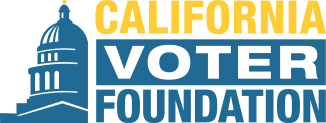Excerpts:
Of all the societal changes brought by the novel coronavirus, the one that lasts the longest might be the one we just went through: Everyone voting by mail.
Already the method preferred by more three-fourths of San Diego County’s voters, its apparent success in the just-concluded election has some officials talking openly about making it permanent.
“Whether it’s enacted statewide by the legislature, or whether we adopt it on a county level with some tweaks, I think it’s here to stay,” said Nathan Fletcher, a county supervisor. “We should be doing everything we can to make it possible for valid votes to be counted.”
Even before the novel coronavirus arrived, the county was exploring adoption of the Voter’s Choice Act, signed into law in 2016, which allows something very much like what we just experienced: Every registered voter gets a ballot in the mail weeks before Election Day and can return it through the postal service, at designated drop-off sites, or at polling places that are open for multiple days up to and including Election Day. Those who prefer to vote in person have that option.
Five counties in the state (Madera, Napa, Nevada, Sacramento and San Mateo) implemented the model for the 2018 gubernatorial election. Ten more, including Orange and Los Angeles, adopted it for this year.
And then COVID-19 put everybody in the same boat. State officials, hoping to deter crowds from gathering in polling places on Election Day and spreading the virus, ordered an all-mail ballot.
“Nothing beats a pandemic to make us shift,” said Michael Vu, San Diego’s registrar of voters.
- - - - - - - - -
Under the Voter’s Choice Act, counties set up drop-off locations for voters to return their ballots if they don’t want to use the mail. (There were 126 in the county this time, mostly at libraries.) They also open voting centers — far fewer of them than the traditional polling places (235 in San Diego this time vs. 1,500 before), but they run for up to 10 days prior to the election instead of the usual one day.
And voters can go to any of the centers, not just the one closest to their residence. (For this election, voters were assigned to a center.)
All of that is designed to give voters more time and more options for casting their ballots. But some habits die hard. In the five counties that used the Choice Act for the 2018 election, the vast majority of voters waited until Election Day or the day before to return their ballots at a voting center.
“One of the challenges with the voter center model is you can’t predict where they will show up when they can vote anywhere, and you can’t predict when they will show up,” said Kim Alexander, president of the non-partisan California Voter Foundation. “There’s a learning curve involved in making people understand that voting happens on more than one day, and in more than one place.”
Vu said that’s one of his concerns, too.
“In a big turnout year, that could create long lines in one or two of the locations,” he said. “I think the Voter’s Choice Act stands as a good framework, but there could be some adjustments that allow for more flexibility.”
He was encouraged by what happened this time. Voters heeded calls to get their ballots in early. More than 60 percent of them had already turned in their ballots by the time polls opened on Tuesday. Only 166,000 people, or about 10 percent, wound up voting the old-fashioned way, in person, because that was their preference, or they lost the mail ballot, or they hadn’t registered in time to receive one.
And even though turnout is expected to rival the historic high of 84 percent, there were no reports of long lines or major problems. Vu said a full evaluation of what went well and what didn’t will take time. (Full Story)

